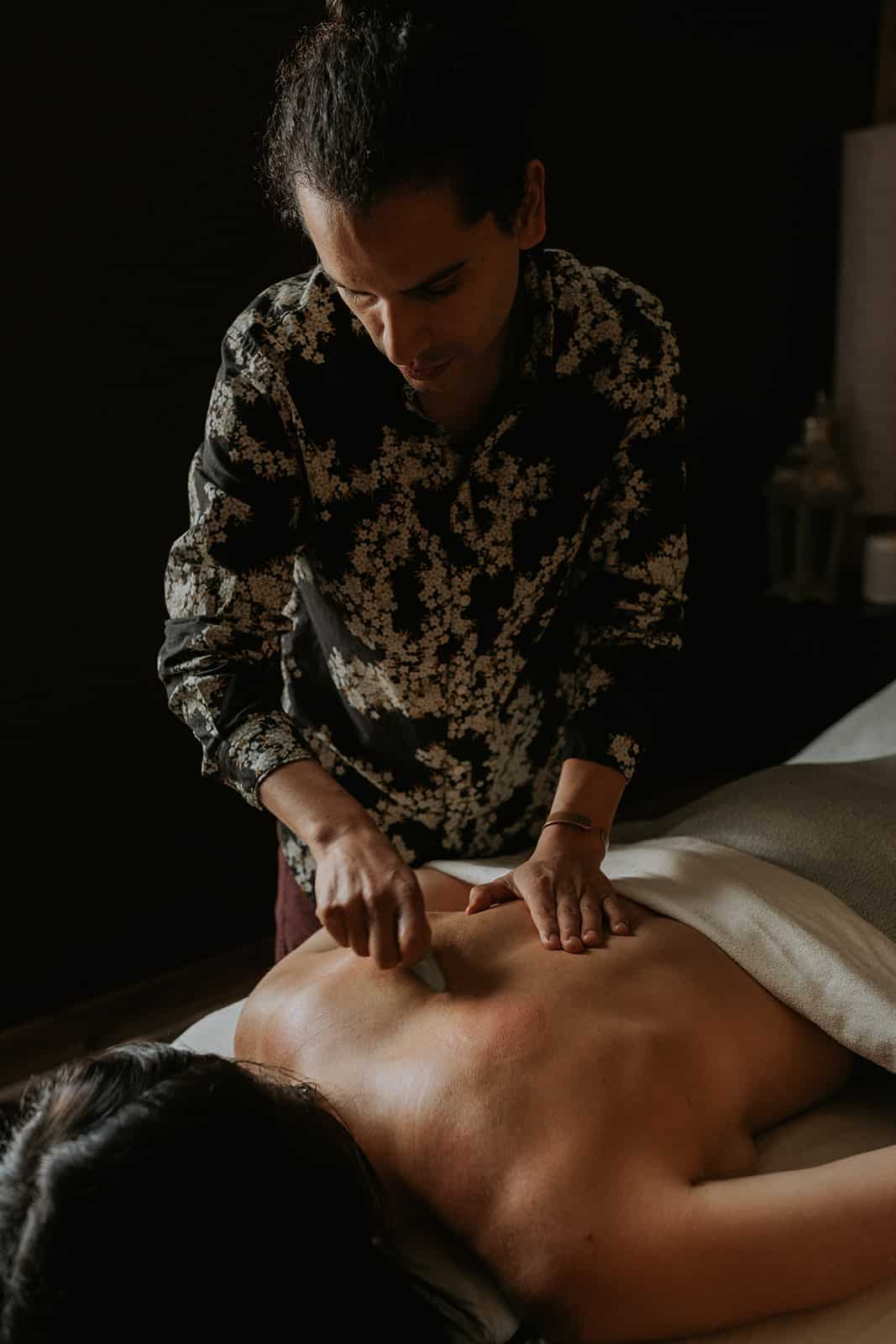MĀ Wellness
Acupuncture for Pain Relief

Understanding Acupuncture: A Traditional Approach to Pain Management
In today’s fast-paced world, chronic pain has become an all too common companion for many individuals. Whether it’s back pain, migraines, or joint discomfort, the quest for effective pain relief often leads people to explore various treatment modalities. Among these, acupuncture stands out as a centuries-old practice with a growing body of scientific evidence supporting its efficacy. In this article, we delve into the fascinating realm of acupuncture and its profound benefits in alleviating pain.

Understanding Acupuncture
Acupuncture is an integral component of traditional Chinese medicine (TCM), dating back over 2,500 years. It involves the insertion of thin needles into specific points on the body, known as acupuncture points or acupoints. These acupoints are believed to be interconnected along pathways called meridians, through which vital energy, or Qi, flows..
The Benefits of Acupuncture for Pain Relief
One of the key advantages of acupuncture is its holistic approach to pain management. Rather than merely targeting symptoms, acupuncture aims to rebalance the body’s energy flow and address the root cause of pain. By restoring harmony within the body, acupuncture not only provides relief from pain but also promotes overall well-being..
Effective for Various Types of Pain
Acupuncture has demonstrated effectiveness in alleviating a wide range of pain conditions, including but not limited to:
Chronic back pain
Arthritis
Headaches and migraines
Neck pain
Menstrual cramps
Fibromyalgia
Modulation of Neurotransmitters:
Research suggests that acupuncture stimulates the release of neurotransmitters such as endorphins, which are the body’s natural pain-relieving chemicals. Additionally, acupuncture has been shown to regulate the levels of serotonin and norepinephrine, neurotransmitters involved in pain perception and mood regulation.
Anti-Inflammatory Effects
Inflammation is a common underlying factor in many chronic pain conditions. Acupuncture has been found to possess potent anti-inflammatory properties, helping to reduce swelling, ease stiffness, and alleviate pain associated with inflammatory disorders like rheumatoid arthritis and osteoarthritis.
Enhancement of Blood Circulation
Acupuncture promotes better blood circulation throughout the body, delivering oxygen and nutrients to injured tissues while facilitating the removal of metabolic waste products. Improved circulation aids in the healing process, accelerates tissue repair, and reduces pain sensitivity.
Minimal Side Effects
Unlike pharmaceutical interventions, which often carry the risk of adverse reactions and dependency, acupuncture is relatively safe and well-tolerated when performed by a trained practitioner. The most common side effects of acupuncture, such as mild soreness or bruising at the needle insertion site, are temporary and typically mild in nature.


Customized Treatment Plans
One of the strengths of acupuncture lies in its individualized approach to patient care. Practitioners assess each patient’s unique constitution, medical history, and presenting symptoms to tailor a personalized treatment plan. By addressing the specific imbalances within the body, acupuncture offers targeted relief and long-lasting results.
Complementary Therapy
Acupuncture complements conventional medical treatments and can be seamlessly integrated into existing pain management strategies. Many healthcare providers now recognize the value of acupuncture as part of a multidisciplinary approach to pain relief, offering patients a broader range of therapeutic options.
Can Acupuncture be Helpful if Patients are afraid of Needles?
Acupuncture is a part of the umbrella of Chinese Medicine and is just one possible tool that your registered acupuncturist may use. In fact, it is possible to book an acupuncture session without the use of needles. Therapies such as, gua sha, cupping, and moxibustion can be used to help with pain depending on the diagnosis.
Cupping and Gua Sha are therapies that help to move stagnant energy that is sitting in parts of your body and creating pain. These therapies use a jade tool or fire cups to bring a slight bruising to the surface. This can be hydrating to the muscle tissue and also bring on an immune response that can be healing.
Moxibustion uses a herb called mugwort that is burned on the body to remove cold and warm the channel. The practice of moxibustion can be very effective at healing pain.

Conclusion
In conclusion, acupuncture holds immense promise as a safe, effective, and holistic approach to pain relief. Its ability to modulate neurotransmitters, reduce inflammation, enhance circulation, and provide individualized care makes it a valuable tool in the management of various pain conditions. As research continues to shed light on its mechanisms of action and clinical applications, acupuncture remains a beacon of hope for those seeking relief from chronic pain.
Incorporating acupuncture into one’s wellness routine can pave the way for improved quality of life, empowering individuals to reclaim control over their health and well-being. Whether used as a standalone therapy or in conjunction with conventional treatments, acupuncture offers a pathway to pain-free living and optimal vitality.
Resources
Please see an resource that provides evidence how Acupuncture works for Pain Management.
Acupuncture in Victoria, BC.
If you’re living in or visiting Victoria, British Columbia, and you’re interested in taking an acupuncture session, you can book with us here.
Thank you for reading and good luck on your journey!
